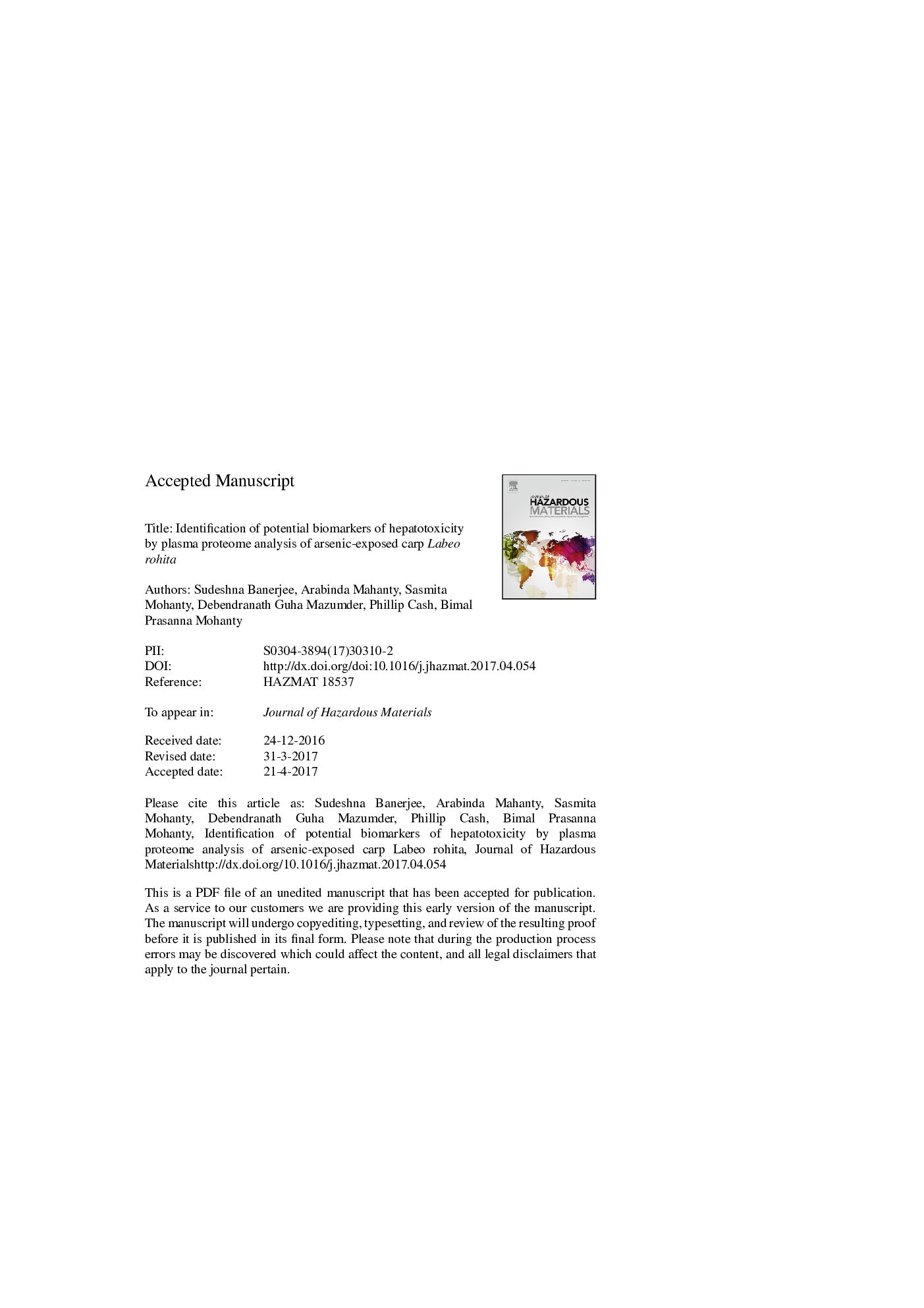| Article ID | Journal | Published Year | Pages | File Type |
|---|---|---|---|---|
| 4979376 | Journal of Hazardous Materials | 2017 | 30 Pages |
Abstract
Arsenic (As) is a toxic environmental contaminant and potential human carcinogen. Chronic intake of arsenic-contaminated water and food leads to arsenicosis, a major public health problem in many parts of the world. Early detection of arsenic toxicity would greatly benefit patients; however, the detection of arsenicosis needs to be done early before onset of severe symptoms in which case the tools used for detection have to be both sensitive and reliable. In this context, the present study investigated plasma proteome changes in arsenic-exposed Labeo rohita, with the aim of identifying biomarkers for arsenicosis. Changes in the plasma proteome were investigated using gel-based proteomics technology. Using quantitative image analysis of the 2D proteome profiles, 14 unique spots were identified by MALDI-TOF/TOF MS and/or LC-MS/MS which included Apolipoprotein-A1 (Apo-A1) (6 spots), α-2 macroglobulin-like protein (A2ML) (2 spots), transferrin (TF) (3 spots) and warm-temperature acclimation related 65 kDa protein (Wap65). The proteome data are available via ProteomeXchange with identifier PXD003404. Highly abundant protein spots identified in plasma from arsenic-exposed fish i.e. Apo-A1 (>10-fold), A2ML (7-fold) and Wap65 (>2-fold) indicate liver damage. It is proposed that a combination of these proteins could serve as useful biomarkers of hepatotoxicity and chronic liver disease due to arsenic exposure.
Keywords
Related Topics
Physical Sciences and Engineering
Chemical Engineering
Chemical Health and Safety
Authors
Sudeshna Banerjee, Arabinda Mahanty, Sasmita Mohanty, Debendranath Guha Mazumder, Phillip Cash, Bimal Prasanna Mohanty,
